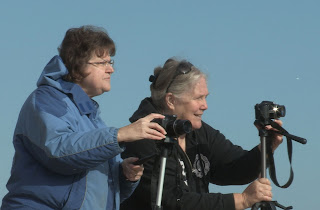South Carolina Advanced Technological Education (SC ATE)
has been helping educators implement Problem-Based Learning (PBL) in classrooms
for years. But often schools can take the SC ATE curriculum and transform it
into their own unique approach. That’s what Phil Regalbuto, instructor in
Electronics Engineering Technology at Trident Technological College in
Charleston has been doing for some time.
Shifting from Standard Solutions to
Custom SolutionsOriginally, SC ATE’s Problem-Based Learning approach
formed the core of Engineering Technology Foundations (EGR 140), a course that
introduces students to fundamental concepts of electrical, mechanical, and
other systems related to engineering technology, along with a healthy dose of
workplace readiness skills. But the original projects have changed over the
years.
For instance, when making presentations for workplace
readiness, students are no longer offered PowerPoint as an option. “When EGR
104 was created, Power-Point was new and exciting, but what we have seen over
the years is death by PowerPoint,” Regalbuto explains. “By forcing them out of
the PowerPoint mold, we’ve forced them into doing some really creative things,”
including brochures, flyers, websites, and even videos.
Other SC ATE components have been dropped in favor of new
projects. Regalbuto has dropped the original mechanical project in favor of
building trebuchets. “We got money from our foundation, and bought some kits,
like a heavy-duty erector set.” After a series of mechanical labs about
different forces and levers, the students build their trebuchets and compete
against each other for accuracy.
The final project is building a break room, which often brings
out real craftsmanship. “I’ve had people make models of the break room detailed
to where they’re putting in LED lighting.”
Spreading Problem-Based Learning to
Other Courses
One benefit of exploring the SC ATE database is that
problem-based projects do not need to remain in the courses for which they were
originally designed. For instance, Regalbuto now uses the problem-based
approach in Introduction to Engineering (EGR 270), which covers the application
of computers in engineering, including programming.
“I give them a Lego Mindstorms robot. It’s created,”
explains Regalbuto, “but their project is to get it through a maze.” The robot
is required to travel all the way down and back through the maze. Failing to
get the robot down to the end of the maze means failing the project, reaching the
remote end is a “C”, and returning
up the maze results in minimal “A.” For a perfect score,
the robot must return to the starting box. “At the end of the semester, I have to kick
them out of the lab, because they want to get that 100, and I won’t let them unless
they stop it in the starting box. I have three or four out of about 40 every semester who
manage to do it.”
Problem-Based Learning and the
Evolving Educational Experience
Experience with project-based learning opens up new
inroads for students and
instructors alike. One of Regalbuto’s many hats is Lead
instructor for the Mechanical
and Electrical Engineering programs’ senior project, in
which students have to design
and build an instructor-approved project. Their projects
have ranged from automatic
dog washers to solar pool heaters to roller coasters. Two
students bounced a laser off a window and amplified the signal so that they
could hear what was going on in the room.
How many of these projects are found in the SC ATE
database? None of them!
“These are all original,” explains Regalbuto. “We’ve taken
the idea of project-based learning and turned it into a capstone course in which
they choose the project. When you give them these kinds of things, they tend to
go the extra mile. You don’t really have to push them.”
“We’ve just added Mechanical Engineering students to the
senior project in the last four years. Some projects have an electrical and a
mechanical component. We have two people working in a team on it. They start
off in the EGR 104 courses and projects and finish with the senior project
class.”
Lessons Learned Along the Way
Here are some things that Regalbuto has noted about PBL:
• Students really like
project-based learning. Regalbuto
notes that students “want to be creative, and they don’t
get much opportunity to do that in some other courses.”
• Giving direction is key. While you shouldn’t do the project
for them, you can give students concrete information at the beginning and
encourage them along the way to bring out their own creativity.
• Expect some apprehension in the
beginning. When students first encounter project-based learning, they may be hesitant. “A lot of them, at the
beginning of the course, are asking ‘How can I get an A?’ or ‘Is this going to be
on the test?’” The apprehension will pass.
• Mix up your teams. Much of problem-based learning
involves teamwork. Regalbuto
says results are much better when you mix them up.
• Expect greater results in the
end. Students take learning more seriously when the project is their own instead of something they are forced to do.
Phil Regalbuto is an Instructor in Electronics Engineering
Technology and Engineering Transfer
at Trident Technical College in Charleston, South Carolina.
He came to Trident Tech in August 1990, and was one of the faculty on the
original ATE grant in the late 90s. Prior to coming to TridentTech, he worked
in industry for 14 years.









